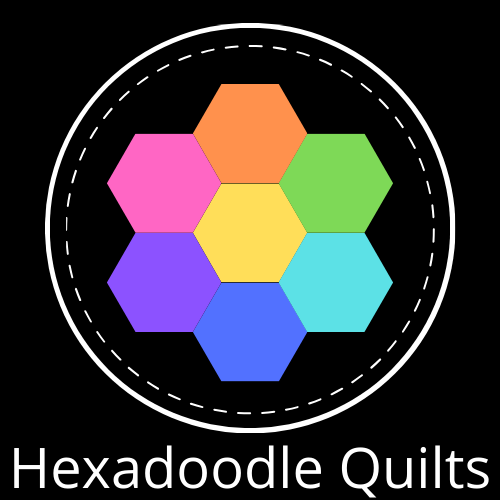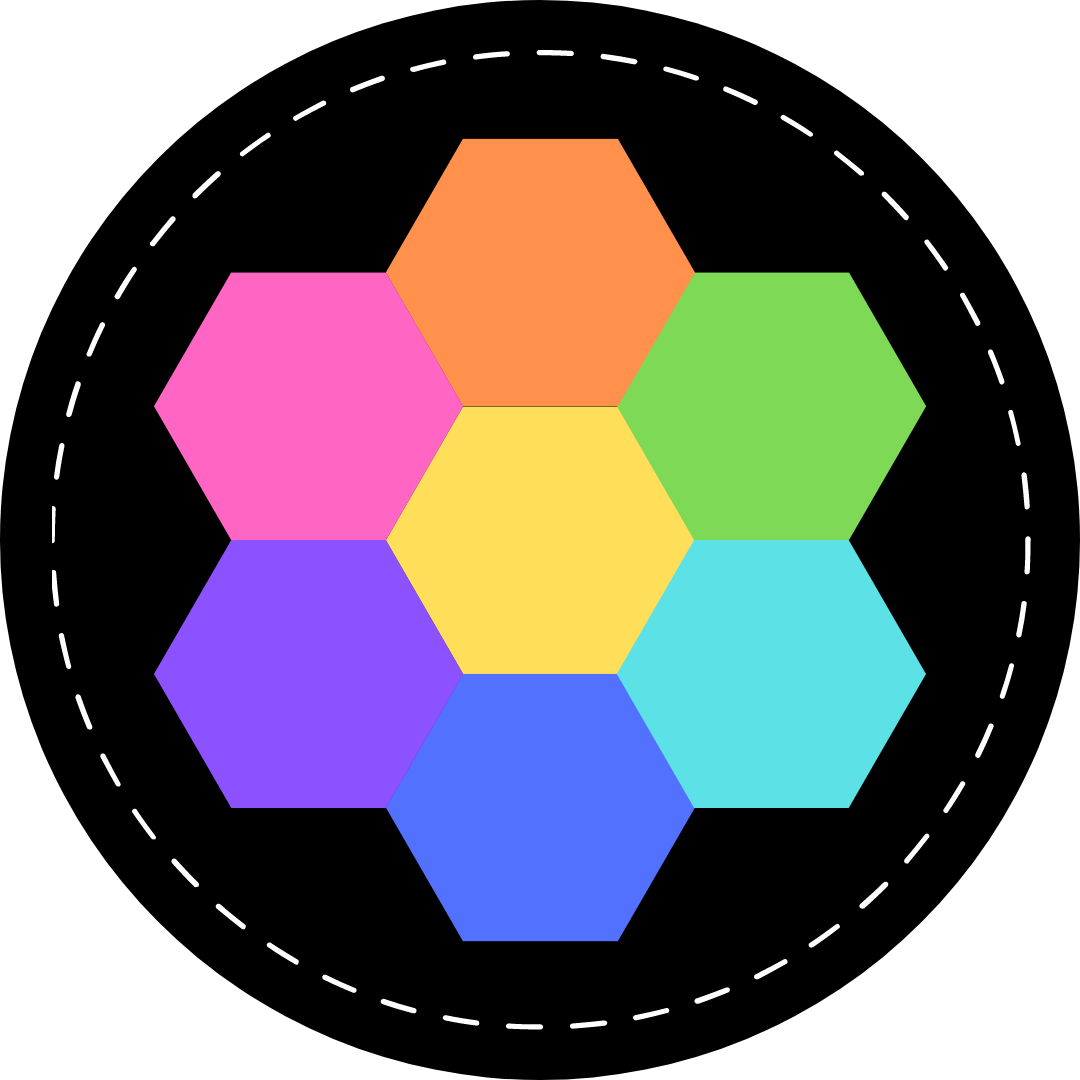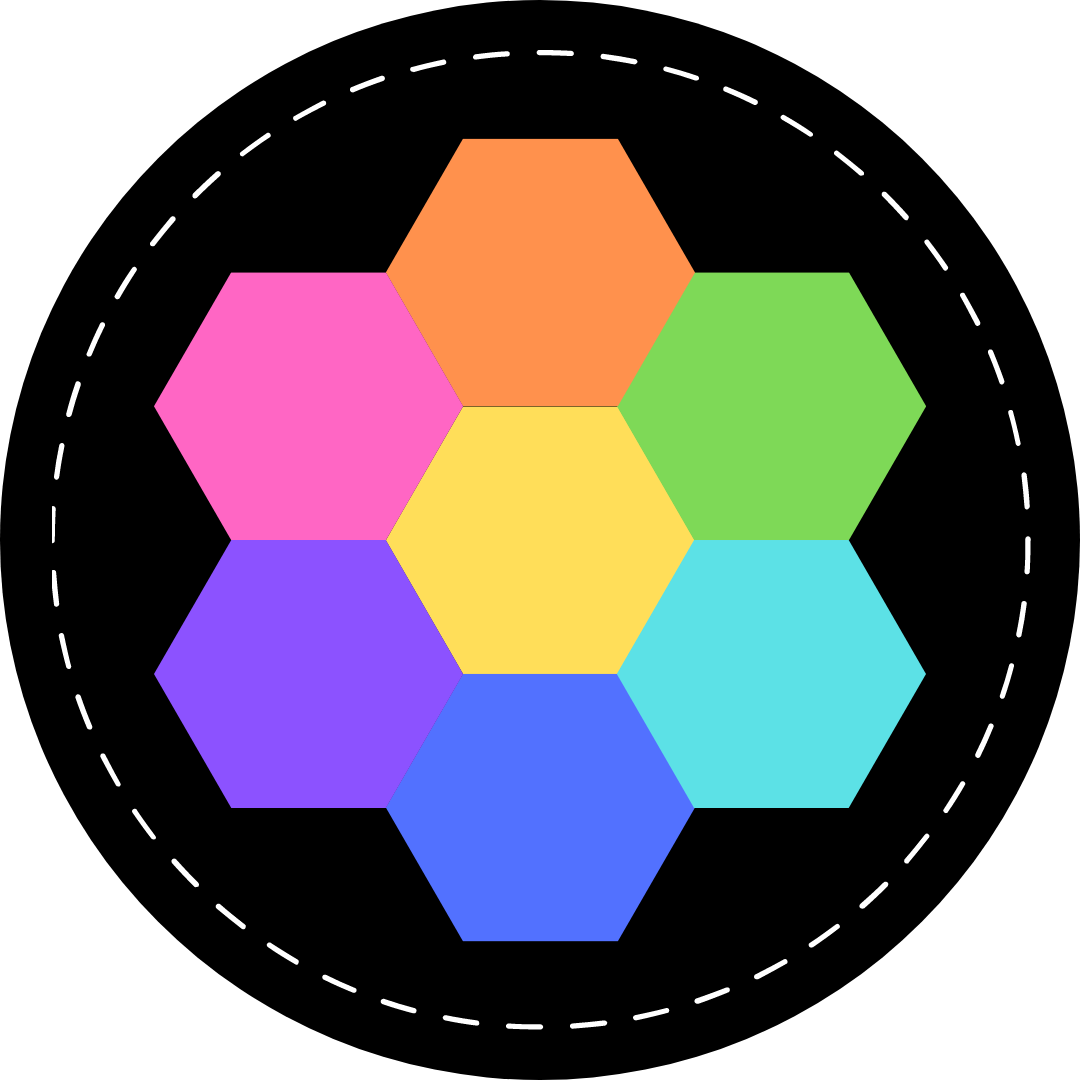At the heart of English Paper Piecing as the name suggests is the humble paper template.
Used to give shape and form to our fabric pieces, you have 3 main options when it comes to sourcing paper templates:
Make your own templates.
English Paper Piecing has been practised for 100's of years using homemade/ handmade paper templates - and it is still by far the quickest and easiest option. My very first EPP project was made using homemade templates (I still make my own templates today for the majority of my EPP projects)
There are a number of ways you can do this yourself at home and each has their pros and cons:
Print and Cut At Home
The simplest and cheapest way to make your own templates is to just print out and cut your own templates.
All of my patterns come with full size digitally drawn template sheets included so that you can just print out as many templates as you need using your home printer and then cut them out as required.
The key thing to remember with using this method is to be consistent with your cutting out.
Decide how you are going to cut the shapes out and stick with it. e.g. always cut the templates on the outer edge of the marked line OR always on the inside edge of the marked line.
For the smaller projects that I offer here, tiny differences in template sizes will not affect the outcome of your project, but for larger projects any differences in template sizes may be amplified to the point that your pieces just won't fit together well.
Paper Punches
Fiskars have a range of hand held paper punches for making hexagons. (There may be other punches available from other manufacturers)
You cut your paper templates by sliding your lightweight card stock into the slot and squeezing the handles to punch out your hexagon shapes.
They are great for the more traditional hexagon quilts such as Grandmothers Flower Garden or my Hexadoodle quilt designs as you can just punch as small number of templates at a time and know that they will be consistently the same size.
Another advantage to using the paper punch is that you can recycle any unwanted junk mail, postcards or card. Be careful that the materials you use to make your templates are the same weight so that your wrapped shapes end up the same size.
The main disadvantages to using a Paper punch are:
A) If you have reduced strength in your hands, you may find the squeezing of the punch handles difficult to do often or to maintain for long periods of time.
B) They come in limited sizes and shapes. At the time of writing, the Fiskars hand held hexagon punch comes in 3 sizes only:
- Medium - yields a 1/2" hexagon
- Large - yields a 3/4" hexagon
- Extra Large - yields a 1" hexagon
However, if you intend to stick to just one size of shape, you may find that a paper punch is the best option for you.
Die Cutting
There are a myriad of personal die cutting machines available on the market and these have long been used for papercrafts and scrapbooking.
In recent years, there has been a growing number of dies made for quilting purposes and the resurgence of interest in EPP has meant that there are now many dies available for us now too.
I currently have 2 Sizzix Bigshot die-cutting machines (the standard Bigshot and the Bigshot Pro). I also owned an Accuquilt Go! Baby for a number of years, but have since sold it. I'll explain why a bit later on.
In simple terms, die-cutting machines use pressure to force a blade through your chosen material(s).
The "Die" typically consists of a series of sharp blades set in a shape surrounded by a protective foam mounted onto a wooden base. The wooden base is often encased in a plastic surround.
- You cut your shapes by laying your chosen material on top of the die and then sandwiching these between 1 or more cutting mats.
- The "sandwich" is placed onto the bed of your die-cutting machine and then passed through a set of rollers - usually by turning a handle on the side (although, I understand that some electric models are also available).
- The pressure exerted by the rollers forces the hidden blades inside the die through your material resulting in the shapes being cut.
Advantages
- Lots of dies available for standard EPP shapes like hexagons, squares or honeycombs
- Dies are relatively cheap to purchase and there is a healthy second hand market on the popular online auction sites
- You can cut lots of different materials with a cutting die
- For example: I use a 1" die to cut paper templates and a 1.5" die to cut out fabrics for wrapping the 1" papers.
- Does not require great hand strength - can be easily used by those with weaker hand strength and grip (My kids love cutting things out for me - under supervision of course)
- Some machines like the Sizzix Bigshot can accept other manufacturers dies in them (you might need to add a shim to do this though)
Disadvantages
- High initial cost for cutting machine and dies (at the time of writing, Sizzix dies are around £15 each new)
- Some manufacturers use proprietary dies which means they can't be used in other machines (the main reason I sold my Go! Baby - I could only use Accuquilt dies in it) However, I can use some Accuquilt dies in my Sizzix machine
- Some manufacturers dies are very expensive - not always a cost effective solution or alternative to buying pre cut papers
- They take up counter space! If you do not have a large dedicated sewing space (I don't), you will need somewhere to store your cutting machine, dies and accessories.
- Not exactly portable...kind of a paradox when we talk about the portability of EPP projects!
Home Digital Cutting Machines
My favourite "weapon" in my EPP arsenal is my personal digital cutting machine.
There are a number of them on the market now e.g. Cricut Maker, Brother Scan n Cut and the Silhouette Cameo. I use a Silhouette Cameo MkII. It is quite a number of years old, but I find it more than capable of doing what I need it to do.
In short, a personal digital cutting machine is exactly that...it cuts shapes to any size or design you program it to! It is perfect for English Paper Piecing!
Advantages
- Can design and cut your own custom EPP templates
- Accurate and clean cutting of templates
- Cut only what you need
- Newer models connect via wireless technologies meaning fewer cables
Disadvantages
- Large initial investment (A new Silhouette Cameo is around £350)
- Cutting mats are consumable items and will wear out with repeated use (I have found other uses for them though once they are past their prime)
- Cutting blades also wear out. Silhouette also recommends using a separate fabric blade for cutting fabrics
- Some need to be connected to a computer or tablet in order to use them.
- To get the most from their capabilities, you may need to upgrade the standard design software (more ££'s)
PURCHASE PRE CUT PAPER TEMPLATES
You can purchase pre cut paper templates in a vast array of shapes and styles.
Using pre cut templates offers the ability to focus on the piecing part of the EPP process whilst giving you the piece of mind that every template is accurately cut and consistently the same size.
For me, the biggest disadvantage to purchasing paper templates is the need to purchase a vast array of shapes in different sizes depending on what project I am making. I also need to store the templates safely so that they are not damaged or creased whilst waiting to be used.
The other downside for me is the agonizing wait for delivery (despite loving the relaxing pace of english paper piecing, I am anything but patient!) and I often get distracted and move on to something else before the Postman has even been able to deliver my templates!
I usually wait until one of the major Quilt Shows is in my area before buying pre cut templates, but if you are fortunate enough to have access to a well stocked LQS (local quilt shop) then you may well be able to get your paper template fix quickly.
Check out Paperpieces.com for a mind blowing assortment of paper pieces!!!

NO TEMPLATES?
Whilst technically not English paper piecing, I did come across this video the other day on my internet wanderings and thought it was a cool way of making hexies without the need for paper pieces.
The only real problem I see with this method is how to prepare your fabric circles to begin with...that being said, I do have a few circle dies for my Sizzix Bigshot.
I'm pretty sure we all have something round at home that we could trace and cut around. It could be just the excuse I need to eat more Pringles! 🤣
The views expressed in this article are entirely my own. I am not affiliated with any of the companies mentioned in this article and have not received any forms of compensation from them for mentioning their products.




Comments ()